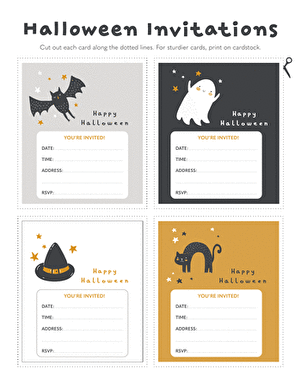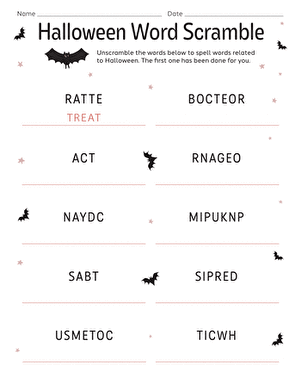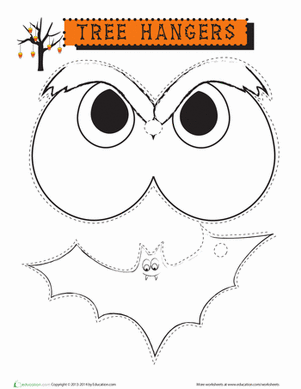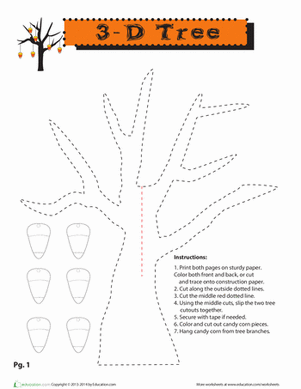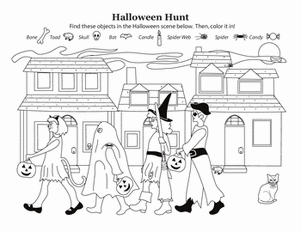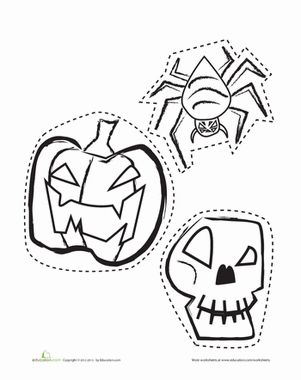Activity
Halloween Potions
What better time to explore magic potions than Halloween? Your child will learn all about cause and effect as they experiment with potion-making in this Halloween themed activity! Your whole family will love this simple activity that combines a gentle introduction to the scientific method along with some spooky Halloween fun!
What You Need:
- Baking soda
- White vinegar
- Dish or hand soap
- Food coloring
- Several small containers of varying sizes
- Measuring cups and spoons
- Large mixing bowl or pot
- Mixing spoon
- Eye dropper
- Squeeze bottles
- Optional: Halloween themed materials (e.g., gummy worms, plastic spiders, orange/black glitter, Halloween confetti, googly eyes, etc.)
- Optional: Selection of Halloween books such as: Room on the Broom by Julia Donaldson, Alice and Greta: A Tale of Two Witches by Steven J. Simmons, or I am a Witch's Cat by Harriet Muncaster.
- Optional: Recording Observations: What Do You See? worksheet
What You Do:
Prepare for the project by setting out containers filled with a small amount of each dry material (e.g., baking soda, glitter, confetti, spiders, worms, googly eyes, etc.). Then set out the wet ingredients: food coloring (mix a small amount with water and place in a bottle or cup), vinegar, and soap along with droppers, spoons, and squeeze bottles.
- Explain to your child that they will be creating their own potion. Say, “Do you know what a potion is?” For younger children, provide examples of potions using a Halloween book such as: Room on the Broom by Julia Donaldson, Alice and Greta: A Tale of Two Witches by Steven J. Simmons, or I am a Witch's Cat by Harriet Muncaster. Ask your child to describe some of the ingredients that might be found in a potion.
- Introduce the materials and ingredients and explain that some of the ingredients will cause a reaction (define a reaction as a change or response to something, in this case the mixing of ingredients). **Note to grown-ups: Mixing baking powder and vinegar causes a mild chemical reaction, which results in a small amount of fizz.
- Ask your child to predict or make a guess about what ingredients will react to other ingredients. Share that an educated guess or prediction in science is called a hypothesis. Provide sentence frames for your child to fill in, such as:
- I think that ________ will happen when I mix ________ and ________.
- If I mix ________ and ________, then ________ will happen.
- Invite younger children to draw a picture of their potions and possible reactions. For older children, ask them to write down the ingredients and their hypothesis about their potions. Remind your child that a hypothesis is an educated guess and can sound like, “If ______, then ______.”
- Help your child get started by modeling how to use the tools to mix the ingredients together into a potion. Ask questions such as, "What do you notice happening? What does this look like? What does this remind you of?"
- Play with the ingredients to create different kinds of potions (vinegar + baking soda + glitter, vinegar + baking soda + soap, etc.) and allow your child to spend time problem solving and exploring reactions between ingredients as they create their potion.
- Encourage younger children to record their potions by drawing a picture or writing a simple sentence using the Recording Observations: What Do You See? worksheet. Have older children determine if their hypothesis was correct by writing few sentences about their findings. Your scientist will love this fun Halloween science activity!
Extensions: Use the same directions as above, and have your child experiment with measuring different amounts of baking soda, vinegar, and other ingredients to see how their potion changes.
Related learning resources

